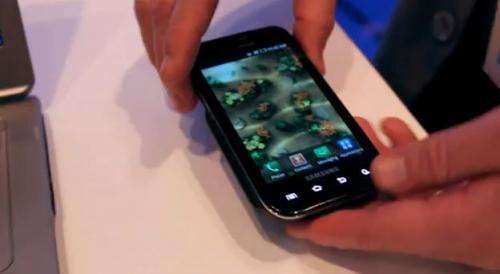(Phys.org) -- Intel sees a future where you simply, wirelessly, use your laptop to charge your phone. To prove its point, Intel pulled off a proof-of-concept charging feat this week at Computex where a laptop wirelessly powered a smartphone positioned alongside the computer. To demonstrate its action, Intel used an Acer Aspire laptop with a Samsung smartphone. The computer was shown as having a plug-in transmitter module on its right side, for the charging. The compatible phone, with its receiver placed alongside the laptop transmitter, started charging. A ping sound and notification confirm the connection has been made and the process is in effect.
Power instantly begins to flow from the laptop to the phone. How long would the exercise take to get a phone working? The demo rep was heard in the video saying “Bring it into your meeting, and by the end of the meeting, you have enough to go for the rest of the day.”
Intel claims to be able to deliver up to three watts of power via the system, which is considered as more than enough to charge most mobile devices.
While a knee-jerk reaction may be one of high hopes that this will be commercialized soon so that you need not lug around a phone charger when mobile, some tech watchers say to think twice. They are raising interesting questions about how useful this proof of concept may be. In fact, they suggest that possible power downsides could render the inconvenience of carrying around a phone charger trivial. Questions are raised about how much battery life might be sapped from the laptop to power the phone.
As Technology Review comments, one may be put in a zero sum game if the phone is drawing down battery power from the laptop. Intel at Computex had earlier drawn visitors toward another charging demo, this time showing an easy charging option for a wireless keyboard. All one would need to do is place the keyboard on the base of the computer and it would begin charging. The user touches the base of the PC to activate the ability of the keyboard. There was no word on production versions. An Intel spokesperson said that the company has considered porting the technology over to other accessories.
More information: via The Verge
© 2012 Phys.Org























